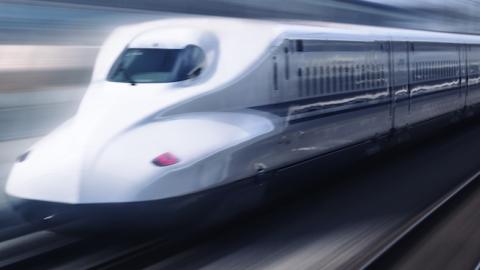Another day, another round of cuts to California's high-speed rail plans. The LA Times reports:
The California bullet train authority has told its design engineers that the future system would have shorter trains and smaller station platforms, reducing the capacity of individual trains by roughly 50% and potentially the capacity of the entire Los Angeles-to-San Francisco route.
It is the second time that operating parameters have been reduced this year.
In May, the authority’s managers decided to cut the maximum operating speed of trains inside tunnels from 220 mph to 200 mph, a result of building tunnels with smaller cross-sections. The authority also cut in half the speed of trains as they merge from station tracks onto the system’s main line, a move that would reduce the very long lengths of transition tracks in and around major cities.
As the $64-billion program has evolved, the state has had to make political compromises that added to the cost of the system and alternatively adopted cutbacks that reduced the overall cost.
Experts quoted in the article say many of these cuts should have been expected, and the rail authority insists that its long-range plans still anticipate the same number of passengers as before. But with capacity being cut semi-annually and operation still many years off, this is more likely to be just the early stages of downscaling than it is to be the last of it.
With much of the funding still unidentified and unresolved debates over routes and preferred construction timelines, California's high-speed rail plans were already in disarray. Sacramento still expects the other 49 states to help pay for California's high-speed rail. And it thinks private businessmen will get involved. Both of those assumptions are questionable at best. The state already slowed the speeds trains would travel at through tunnels along the route earlier this year. When private and federal funds fail to materialize, more cuts will be necessary. By that point, we wonder if the system will be anything more than a faster-than-usual but ultimately conventional electrified rail network.
There are practical concerns. California's high-speed rail projections incorporate expectations that commuters will use the service for trips in and around Silicon Valley and Sacramento. But high-speed rail doesn't make much sense for commuting. The time gains are most practically useful over longer distances. The time it takes to get from home to the train station, wait for a train, and then get from the station to work often cancels out any savings derived from taking the fast train at all. In general, the evidence suggests that trains are most popular with commuters who don't have to drive to or from the stations. In California, almost everyone would have to drive to and from the stations.
And there are bigger-picture problems as well. California's high-speed rail will take at least a decade to complete, and it's that lengthy timeline which ultimately raises the most questions about the project. Even if the project gets built in the way it's currently (optimistically) projected, ten years is a long time in today's rapidly-changing economy. It's not clear that high-speed rail even makes good sense today. As teleconferencing technology improves and self-driving cars come online, will trains be as attractive to businessmen and tourists in 2025? And even if they will be, the slow pace at which the U.S. builds its infrastructure means that California's trains will almost certainly be using outdated technology before they even come online. Just look at Acela.
Even if California's high-speed rail development were going according to plan, tough questions would await its completion. Throw in the state's repeated downsizing and cost overruns, and you get a very clear story about why we can't have nice things.



















